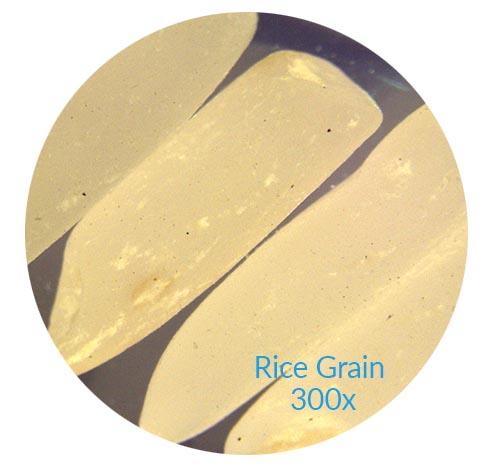Avoiding fakes in your store cupboard – How manufacturers are using microscopes to expose food fraud at the start of the food chain, long before it reaches the consumer.
Fraud within the food sector is an ongoing issue, starting with raw ingredients and ending with cheap imitations mimicking premium brands. There are many instances where the consumer is paying a high price for sub-standard or even contaminated products.
Unfortunately, the looming cost of living crisis, brought on by the increasing supply and cost pressures placed on manufacturers, means the volume of counterfeit goods is set to grow exponentially, driven by consumers’ search for value for money.
The definition of food fraud
In essence, food fraud is the deliberate addition, removal or substitution of a substance in order to misrepresent the quality of the product to the buyer. This Economically Motivated Adulteration (EMA) can occur with both raw ingredients and finished products.
Protecting the consumer at source
Companies wishing to protect the consumer and maintain their reputation for taste and quality know that wholesome ingredients are key.
Consequently, they have created strict quality control systems designed to uncover compromised food sources.
The best place to start is with their suppliers of raw materials. Capturing counterfeit ingredients at the very start of the process is the obvious way to avoid illegal foodstuffs entering the food chain.
Counterfeit food under the microscope
The starting point for robust quality control of a supply chain begins at a microscopic level, with Inspectors batch-checking the consignments of raw materials received from suppliers. Visual inspection forms an important part of this process.
Typically, a random sample of between 30g to 50g is checked under a bench magnifier or digital microscope, at the appropriate level of magnification for the substance being assessed.
The Inspector is very quickly able to ascertain whether the consignment is genuine or whether tampering has taken place.
Once the visual analysis is complete, the inspector incorporates these details into the final report. In many cases, the report includes images capturing exactly what was seen under the microscope. This report is stored in the database offering the manufacturer full traceability, thereby validating the ingredients listed on the final packaging.
Food fraud – Taking a look at specifics
There are many opportunities for unscrupulous traders to introduce counterfeit foodstuffs into the food chain, so let’s narrow it down to a few examples.
Not all seeds are created equal
Sometimes fraudsters manipulate products before they are even grown. In the case of agricultural seed, utilising a bench magnifier or a simple to operate digital microscope, offers suppliers a quick and effective way to verify the quality of seeds.
For example, there have been cases where mustard seeds were used to adulterate a consignment of the more expensive rapeseed. This is very difficult to detect with the naked eye, as they are an extremely close match. However, by looking at a batch sample under a microscope inspectors can easily spot the presence of the spikier mustard seed. This simple check ensures the farmer ends up with a profitable and uncontaminated crop at the end of season.
A grain of truth
Rice is another product easily tampered with in a variety of ways. The most infamous example is that of plastic rice exported from China to Nigeria. Supposedly, the criminals mixed synthetic resin and potato to form shapes resembling grains of rice. Fortunately, customs seized the shipment before it reached consumers.
The more common approach to EMA is to use cheaper rice variants and pass it off as basmati rice, or to bulk out sacks of basmati with the less expensive rice. Consumers pay a premium for basmati rice as it is aged, sometimes for years, allowing it to completely dry out, ensuring the fluffy texture when cooked.
Cheaper rice variants and basmati rice have differing characteristics, which are quickly identifiable under a microscope. The basmati grain has a tapered end and is longer than that of the cheaper regular rice grain. When inspecting rice it is useful to use a microscope which offers overlays for image comparison or sizing purposes.
The colour of the grains are another tell-tale sign which basmati having a more golden colour than the flat white of other rice variants, therefore colour controlled illumination is important.

When it comes to food fraud ‘extra’ is not always better
When a purchase price is based on weight, additional items are a great way for fraudsters to earn more money. With this in mind food manufacturers purchasing grain will always check batch samples for ‘extras’ such as insects or stones. In many instances, fraudsters get really creative with powdered raw ingredients. This means food manufacturers who buy these products in bulk are always on the alert and conduct regular testing as a matter of course.
For instance, ground black pepper can be bulked out by a whole range of things, from chaff to juniper berries or similarly coloured seeds, any of which severely alter the taste. Similarly, ground coffee is a target for EMA with coffee husks or even twigs and coloured paper added to the coffee.
Inspectors looking at these sort of ingredients often choose a digital microscope with zoom magnification so that they can more closely examine any suspected additions.
Finding the right microscope for the job
There are so many things to look out for when it comes to uncovering food fraud, and the cheats are always coming up with ever more novel ways to fool suppliers and manufacturers. The right tool for the job is critical in spotting and recording substitutions. Vision Engineering make it simple for you to choose the perfect inspection microscope. Contact us today to find out more.
Our customers use:
Vision Luxo Bench Magnifiers, which offer:
o colour controlled illumination
o hands-free operation
o Large field of view
o Shadeneck cover preventing Foreign Object Damage (FOD)
o Circus (easy clean enclosed arm)
o Circus and Wave: Camera (option)
VE Cam offering:
o Simple operation
o Image capture
o Zoom magnification for closer look
o Grid overlay for sizing
EVO Cam II providing:
o Simple operation
o Image capture
o Zoom magnification for closer look
o Scalable grid overlay for sizing
o Overlays (reference image / outlines sizing)
o Virtual callipers



